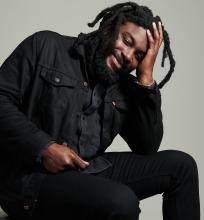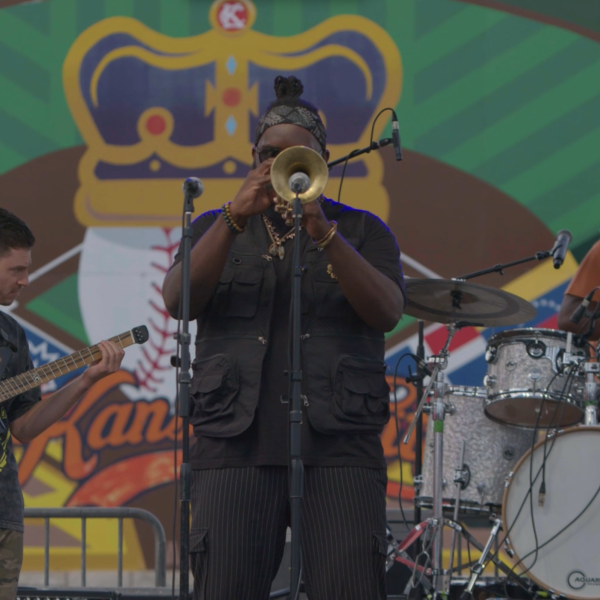Taking a Page from Baldwin: Book-Reading as a Violence-Coping and Prevention Strategy
In 1963, James Baldwin told a LIFE magazine reporter: “You think your pain and your heartbreak are unprecedented in the history of the world, but then you read. It was Dostoevsky and Dickens who taught me that the things that tormented me most were the very things that connected to me with all the people who were alive, or who ever had been alive. Only if we face these open wounds in ourselves can we understand them in other people.”
Baldwin, who wrote and spoke repeatedly about the scalding rage and humiliation he suffered at the hands of systemic racism, was never one to call book-reading a violence-coping and prevention strategy. Even so, it is gratifying to see a team of arts-and-health researchers use, as an epigram for their published study, the first sentence from the extract quoted above.
Last month, for “Quick Study”—the NEA’s research podcast—I summarized various recent surveys about Americans’ book-reading habits. I also shared information about declines in the percentage of U.S. children who read for pleasure. But the lives of books do not unfold merely between two covers or on a screen.
Books ignite social and civic awareness and activity, even while offering intensely personal experiences for readers. This realization is the driving force behind the NEA Big Read initiative, which, in partnership with Arts Midwest, rallies communities to discuss and celebrate, often through other art forms, one book from a diverse and growing list of titles and genres.
Researchers at Johns Hopkins University now have studied a one-book, one-city program not unlike NEA Big Read. Tasha Golden and her colleagues at the International Arts + Mind Lab at Johns Hopkins University credit One Book Baltimore (OBB) with the capacity to engage youth, stimulate discussion, and prompt assets-based opportunities for youth to share experiences and express feelings.”
A collaboration involving the T. Rowe Price Foundation, the Baltimore public school system, and Enoch Pratt Free Library, OBB focused on youth participants: books were distributed to 85 middle schools in the fall of 2019. Students read Jason Reynold’s The Long Way Down (2017), a young-adult novel in verse, the winner of the Newbery Medal and many other prizes.
The book’s protagonist is a teenager, Will, who has lost his brother to gun violence. Armed with his brother’s own gun, Will takes an elevator down from his apartment, seeking revenge. But each time the doors open on a floor, he encounters a different figure from his past, the ghosts of people who, like Will’s brother, have been gunned down. The novel’s action transpires in 60 seconds.
Over a four-month period, teachers, administrators, and librarians integrated A Long Way Down into student reading and project assignments, and events and programming throughout Baltimore. The Johns Hopkins team conducted pre- and post- surveys of participating students, school administrators, teachers, and librarians.
The pre- surveys permitted analysis of factors such as “exposure to violence, frequency of interest in and discussions regarding violence and peace, familiarity and agreement with ’the code of the street”’—since street code is a major theme of Reynold’s book—“and goals related to well-being and friendship,” the study article notes. Post- surveys covered some of the same ground, but also included questions on “levels of program participation, the influence of the novel on students’ perceptions of (or values related to) violence and peace, and the extent to which students engaged in dialogue about the novel with peers, parents, and teachers,” the article adds.
As for results, most post- survey respondents (61 percent) reported that the book had influenced their thinking about violence, with nearly a quarter claiming “it had influenced their thinking ‘a lot.’” This tendency was higher for those who had completed the book. Seventy-four percent of these respondents said the book had influenced their thinking about violence, versus 56 percent who had not finished the book.
The researchers found, additionally, that respondents who had experienced personal violence were more likely to report that the book had influenced their thinking about violence. On the other hand, respondents who had experienced violence “more than once” were more likely to say the book had not influenced such thinking. In all, nearly half (49 percent) of students said in the “pre-” surveys that they or a family member had seen or experienced street violence. In post- surveys, that number was 51 percent, with 38 percent having done so more than once.
Beyond self-reported changes in their perceptions about violence, 84 percent of students who completed The Long Way Down said they had discussed it with their friends. (Incidentally, 58 percent who did not finish the book also reported having had discussions about it.) Overall, based on the post- survey results, roughly 60 percent of students said they wanted more opportunities to discuss violence with their peers in school, and/or with their families. But students who had completed the book were more likely—than those who had not—to express a wish to talk with other students about violence.
“Students’ desire for discussion highlights the need to destigmatize challenging experiences while also prioritizing opportunities for connection and expression,” the study authors write, before going on to offer recommendations for program development and replication in other communities. Golden et al. also assert: “That the majority of survey respondents for OBB identified as Black or African American, combined with the extent to which students reported appreciating the book, underscores the imperative to emphasize inclusivity and representation in school curricula and community arts.”
Violence coping—and even prevention—are associated with other types of arts projects nationwide. For instance, a recently awarded NEA Research Lab, at the University of Michigan in Ann Arbor, is investigating how public art can benefit communities by reducing firearm-related police incidents (and other violent crimes) involving youth.
Separately, a NEA Research Grant in the Arts award to Drexel University is supporting the study of school-based dance-and-movement therapy in fostering empathy across students from different cultural backgrounds. Knowledge from this study is meant to inform existing school-violence prevention programs. Empathy, after all, is the bedrock capability Baldwin summoned when he counseled seeing the “open wounds of ourselves” so we can “understand them in other people.” In light of current research, I’m sure he’d be glad to know he was on to something!
The deadline to apply for the NEA’s Research awards is March 28. Visit the Grants section of the website for guidelines and other details.
Sunil Iyengar is the NEA Director of the Office of Research and Analysis.





